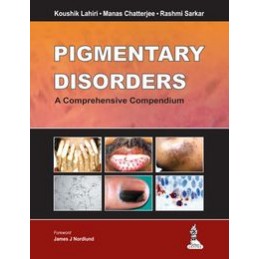- Reduced price

Order to parcel locker

easy pay


 Delivery policy
Delivery policy
Choose Paczkomat Inpost, Orlen Paczka, DHL, DPD or Poczta Polska. Click for more details
 Security policy
Security policy
Pay with a quick bank transfer, payment card or cash on delivery. Click for more details
 Return policy
Return policy
If you are a consumer, you can return the goods within 14 days. Click for more details
Pigmentation means coloring. Skin pigmentation disorders affect the color of the skin. Skin gets its colour from a pigment called melanin. Special cells in the skin make melanin. When these cells become damaged or unhealthy, it affects melanin production. Some pigmentation disorders affect just patches of skin. Others affect the entire body (MedlinePlus).
This book is a comprehensive guide to pigmentary disorders. Beginning with an introduction to the field, the following chapters discuss the diagnosis and management of numerous different skin pigmentation disorders including vitiligo, melasma and ochronosis. Pigmentation abnormalities of hair and nails are also included.
Key points
Data sheet
